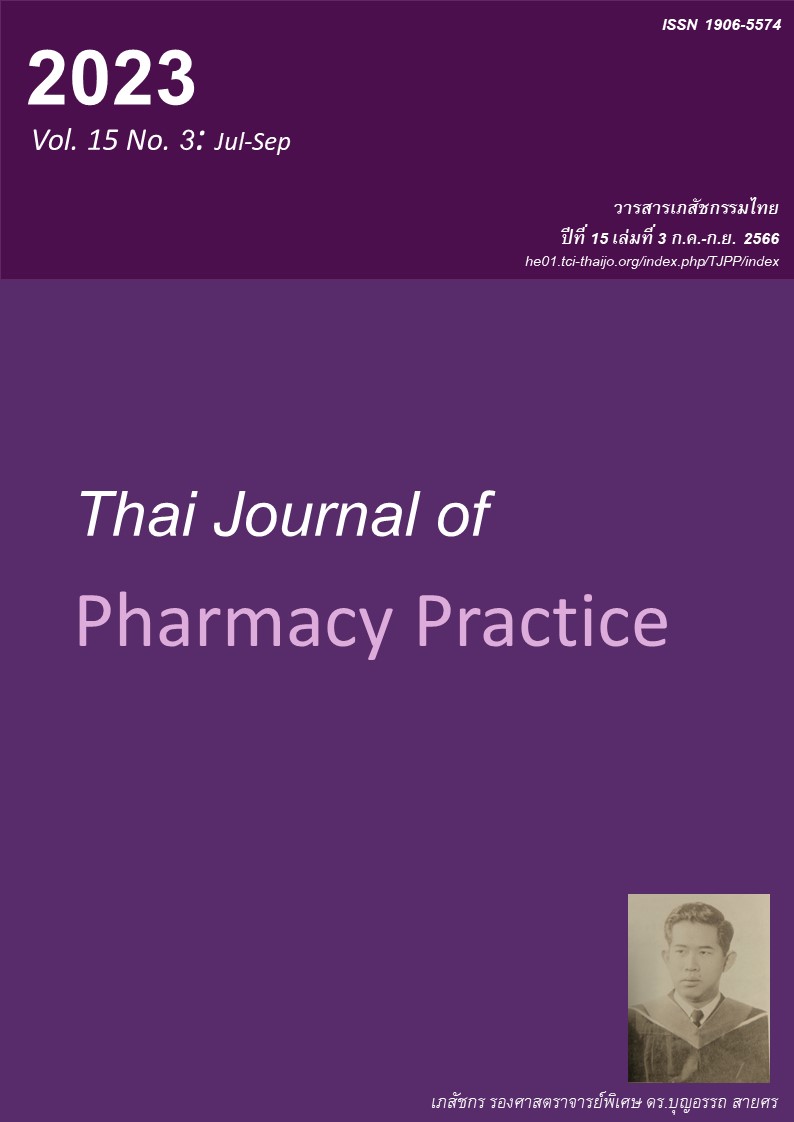รูปแบบการดูแลผู้ป่วยโรคเบาหวานชนิดที่ 2 โดยทีมสหวิชาชีพร่วมกับ ผู้ป่วยและผู้ดูแลที่พัฒนาโดยใช้เทคนิคการสร้างแผนที่มโนทัศน์
Main Article Content
บทคัดย่อ
วัตถุประสงค์: เพื่อหาแนวทางการพัฒนารูปแบบการดูแลผู้ป่วยเบาหวานชนิดที่ 2 โดยทีมสหวิชาชีพร่วมกับผู้ป่วยและผู้ดูแลโดยใช้เทคนิคการสร้างแผนที่มโนทัศน์ วิธีการ: การวิจัยเป็นการศึกษาแบบผสมผสานวิธีการ ผู้ให้ข้อมูลประกอบด้วยบุคลากรทางการแพทย์โรงพยาบาลหัวหินที่มีส่วนดูแลผู้ป่วยโรคเบาหวานและผู้ป่วยเบาหวานหรือญาติของผู้ป่วย รวม 18 คนที่คัดเลือกมาแบบเจาะจง การเก็บข้อมูลใช้การสัมภาษณ์ทั้งแบบกลุ่มและรายบุคคล ผู้ให้ข้อมูลสามารถแสดงความเห็นโดยอิสระเกี่ยวกับปัญหาและสาเหตุที่ทำให้ผู้ป่วยโรคเบาหวานคุมระดับน้ำตาลไม่ได้ตามเป้าหมาย รวมทั้งเสนอแนวทางแก้ไข ผู้วิจัยรวบรวมรายการความคิดและวิธีการแก้ไขปัญหาจากทุกความคิดของผู้ร่วมวิจัย ทบทวนรายการความคิดทั้งหมด และตัดประเด็นซ้ำซ้อน หลังจากนั้น นำรายการความคิดที่ได้มาให้ผู้ร่วมวิจัยจัดกลุ่มและให้คะแนนความคิด และนำข้อมูลที่ได้มาวิเคราะห์โดย multidimensional scaling และ hierarchical cluster analysis ผลการวิจัย: การระดมสมองจากผู้เข้าร่วมวิจัยได้ข้อสรุปรายการความคิดเกี่ยวกับแนวทางที่ทำให้ผู้ป่วยโรคเบาหวานคุมระดับน้ำตาลได้ตามเป้าหมายมากขึ้น ทั้งหมดจำนวน 53 รายการ จากการให้คะแนนความคิดโดยผู้ร่วมวิจัย ได้ความคิดที่มีความสำคัญและความเป็นไปได้สูงในการประยุกต์ใช้ ทั้งหมด 22 รายการความคิด เมื่อนำมาจัดกลุ่มได้ทั้งหมด 5 กลุ่มตามเนื้อหาสอดคล้องและใกล้เคียงกัน คือ กลุ่มที่ 1 การปรับพฤติกรรมการบริโภค กลุ่มที่ 2 ความสำคัญในการควบคุมระดับน้ำตาลในเลือดและป้องกันภาวะแทรกซ้อน กลุ่มที่ 3 การส่งเสริมให้ผู้ป่วยเข้าถึงการดูแลตามแนวทางการรักษาที่เหมาะสมและกระตุ้นแรงสนับสนุนทางสังคม กลุ่มที่ 4 เทคนิคส่งเสริมความร่วมมือในการใช้ยาและการดูแลตัวเอง และกลุ่มที่ 5. การแนะนำการใช้ยาอย่างถูกต้องและปลอดภัยซึ่งเข้าใจง่ายและเหมาะสมกับผู้ป่วยเฉพาะราย สรุป: รูปแบบในการดูแลผู้ป่วยโรคเบาหวานชนิดที่ 2 ที่น่าจะมีผลทำให้ระดับน้ำตาลในเลือดของผู้ป่วยโรคเบาหวานเข้าสู่เป้าหมายมากขึ้นซึ่งจัดทำขึ้นด้วยวิธีการสร้างแผนที่มโนทัศน์ ทำให้ได้รูปแบบที่เหมาะสมกับผู้ป่วยเบาหวานของโรงพยาบาลหัวหิน จากมุมมองของตัวแทนผู้ให้บริการและผู้รับบริการ การแนะนำการใช้ยาที่ถูกต้องยังเป็นเรื่องที่สำคัญและเป็นไปได้มากที่สุดที่จะทำให้น้ำตาลในเลือดอยู่ในช่วงเป้าหมายมากขึ้น
Article Details

อนุญาตภายใต้เงื่อนไข Creative Commons Attribution-NonCommercial-NoDerivatives 4.0 International License.
ผลการวิจัยและความคิดเห็นที่ปรากฏในบทความถือเป็นความคิดเห็นและอยู่ในความรับผิดชอบของผู้นิพนธ์ มิใช่ความเห็นหรือความรับผิดชอบของกองบรรณาธิการ หรือคณะเภสัชศาสตร์ มหาวิทยาลัยสงขลานครินทร์ ทั้งนี้ไม่รวมความผิดพลาดอันเกิดจากการพิมพ์ บทความที่ได้รับการเผยแพร่โดยวารสารเภสัชกรรมไทยถือเป็นสิทธิ์ของวารสารฯ
เอกสารอ้างอิง
International Diabetes Federation. Facts & figures 2021 [online]. 2021 [cited Aug 17 2021]. Available from: www.idf.org/aboutdiabetes/what-is-diabetes/fa cts-figures.html
Division of Non-Communicable Diseases, Depart- ment of Disease Control, Ministry of Public Health. Number of morbidity and mortality rates per year [online]. 2019 [cited Aug 20 2021]. Available from: thaincd.com /2016/ mission/documents detail.php?id =13893&tid =32&gid =1-020
Diabetes Association of Thailand. Clinical practice guideline for diabetes 2017. 3rd ed. Bangkok: Rom- yen Media; 2017.
American Diabetes Association. Standards of medical care in diabetes-2022. Diabetes Care 2022; 45 (Suppl. 1): S1-264.
Division of Non-Communicable Diseases, Depart- ment of Disease Control, Ministry of Public Health. Prevention and control service model diabetics and hypertension NCD clinic plus [online]. 2017 [cited Aug 20 2021]. Available from: ncdclinicplus.ddc.mop h.go.th/pages/public/evaluation/ part2.php
Hepler CD. Clinical pharmacy, pharmaceutical care, and the quality of drug therapy. Pharmacotherapy. 2004; 24: 1491–8.
Novak JD, Cañas AJ. Theoretical origins of concept maps, how to construct them, and uses in education. Reflecting Educ 2007; 3: 29–42.
Trochim W, Kane M. Concept mapping: An intro duction to structured conceptualization in health care. Int J Qual Heal Care 2005; 17: 187–91.
Nitipaichit R. Application of concept mapping in research. Maha Sarakham: Faculty of Pharmacy, Mahasarakham University; 2020.
Sooksai N, Kessomboon N, Chaiyakum A, Johns NP, Supapol S. Application of concept mapping to diabetes primary care planning. Chiang Mai Univ J Nat Sci. 2010; 9: 177–91.
Chai A, Su AT. The effectiveness of diabetes medi- cation therapy adherence clinic to improve glycae- mic control among patients with type 2 diabetes mellitus: A randomised controlled trial. Med J Malaysia 2020; 75: 246–53.
Javaid Z, Imtiaz U, Khalid I, Saeed H, Qadir Khan R, Islam M, et al. A randomized control trial of primary care-based management of type 2 diabetes by a pharmacist in Pakistan. BMC Health Serv Res. 2019; 19: 409.
Paritta C, Sanguan L, Woranuch S. Effects of education by pharmacists supplemented with picto grams on the use of medicationsin diabetic patients. Thai Journal of Pharmacy Practice 2017; 9: 475-88.
Jahangard-Rafsanjani Z, Sarayani A, Nosrati M, Saadat N, Rashidian A, Hadjibabaie M, et al. Effect of a community pharmacist–delivered diabetes support program for patients receiving specialty medical care: a randomized controlled trial. Diabetes Educ. 2015; 41: 127–35.
Lauffenburger JC, Ghazinouri R, Jan S, Makanji S, Ferro CA, Lewey J, et al. Impact of a novel pharma- cist-delivered behavioral intervention for patients with poorly-controlled diabetes: The enhancing outcomes through Goal Assessment and Generating Engagement in Diabetes Mellitus (ENGAGE-DM) pragmatic randomized trial. PLoS One. 2019; 14: e0214754. doi: 10.1371/journal.pone.0214754.
Withidpanyawong U, Lerkiatbundit S, Saengcharoen W. Family-based intervention by pharmacists for type 2 diabetes: A randomised controlled trial. Patient Educ Couns 2019; 102: 85–92.


